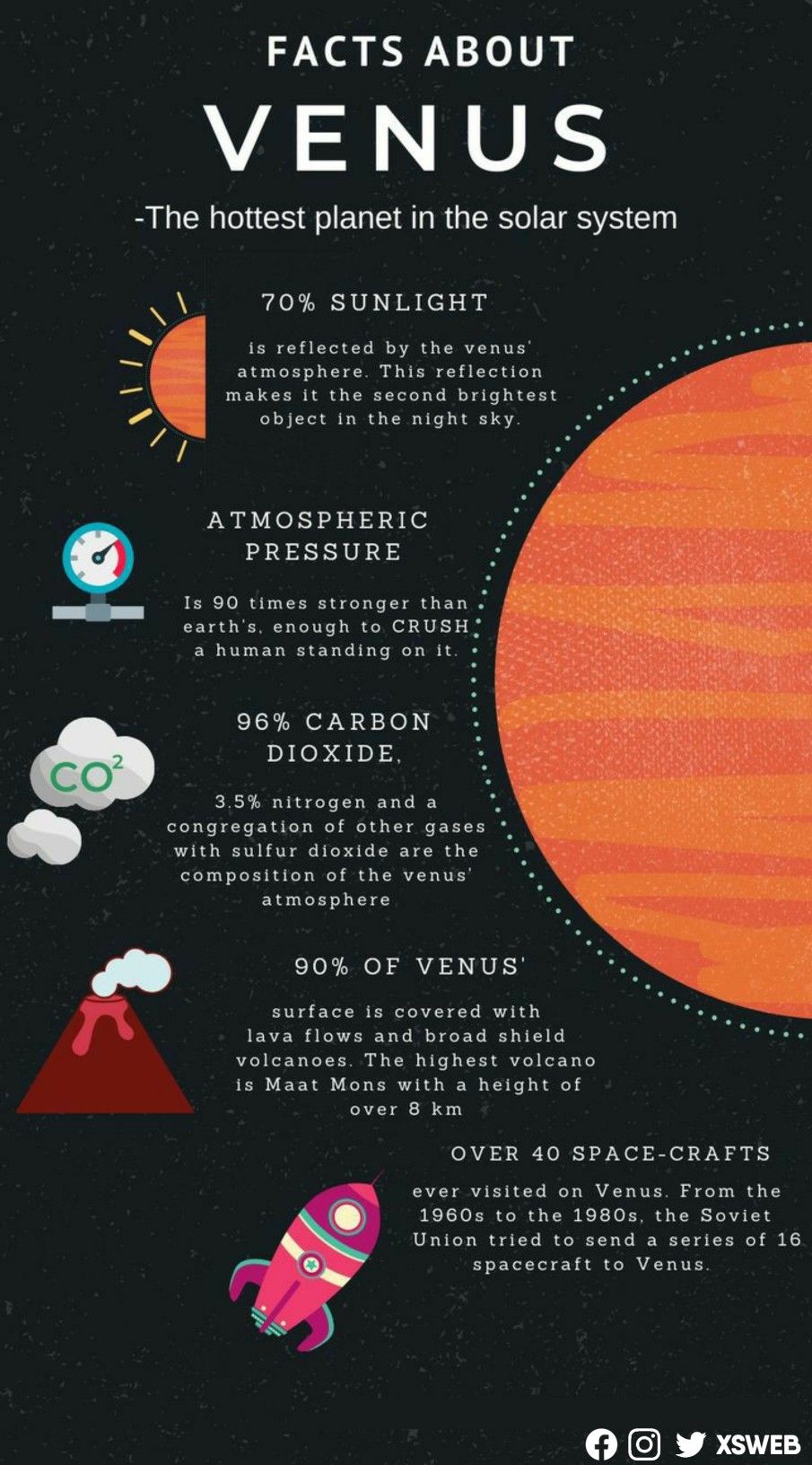Home > Sections > The Universe > Venus
Last Updated: 14th June 2023
ARCHIVED ITEM: this page is no longer updated.
Venus
Keywords
Venus, opposite rotation, retrograde, closest neighbour, density, toxic atmosphere, sulfuric acid, heat trap.
Introduction
Venus is the second planet in order of orbit around the Sun, and is also the closest neighbour to Earth. It is very dense, and has high air pressures on the surface.
Planet Features
Size: Venus is similar in size to Earth, and is often discussed as being Eath's twin due to this fact.
Visual Appearance: a yellow glow comes from the planet, due to the nature of its atmosphere. It reflects around 70% of the sunlight that hits it away, thus making it one of the brightest objects in the night sky. The surface of Venus is covered in volcanic avtivity, whether being a lava flow, or some of the highest volcanos standing at 8km (5 miles).
Interesting fact: Venus is hot enough to melt lead - it easily reaches temperatures in excess of 425° Celcius.
Structure: being one of the four terrestrial planets in the Solar System, Venus is of a rock form. It's structure has a core, but it is unknown if the core is liquid or solid, but it is a metal core. The atmosphere is made up of 96% Carbon Dioxide, and mixed with the rest being nitrogen and sulfuric acid. It is a very hostile environment. The gravity on Venus is 0.9 that of Earth.
Name: like Mercury, Venus has gone by previous names like Phosphorus and Hespherus. The current name came from the Roman goddess for love and beauty. The Greek equivalent of this is known as Aphrodite.
More: Venus rotates in the opposite direction to Earth, In fact, it's the only planet to rotate in the opposite direction. Venus displays similar phases to that of the moon, due to it's presence within Earth's rotational orbit. Because of Venus' retrograde rotation, if you were to stand on the surface, you would see the sun rise in the West and set in the East. Due to Venus' slow spin, it maintains it's almost spherical shape.
Here is a YouTube video from National Geographic on Venus:
Space Missions
Venus has had the most encounters with space craft, having up to 40 different missions sent there. Between the 1960s and 1980s, Russian scientists explored this planet with great interest, sending up at least 20 different probes and craft that would penetrate the atmosphere, stay in orbit, and even land on the surface. In 1983, Veneras 15 and 16 missions sent a radar system capable of making high-quality of images of the surface, which were later sent back to Earth.
On it's way to Jupiter, the U.S. Galileo spacecraft flew past Venus. It was able to photograph a lower level cloud base, using infrared wavelengths. More recently, the Magellan missions were capable of taking high-resolution images of the planet, including the magnetic fields on the planet. It was in a polar orbit, so was able to give detailed pictures of almost all latitudes of the planet.




 Earth
Earth


